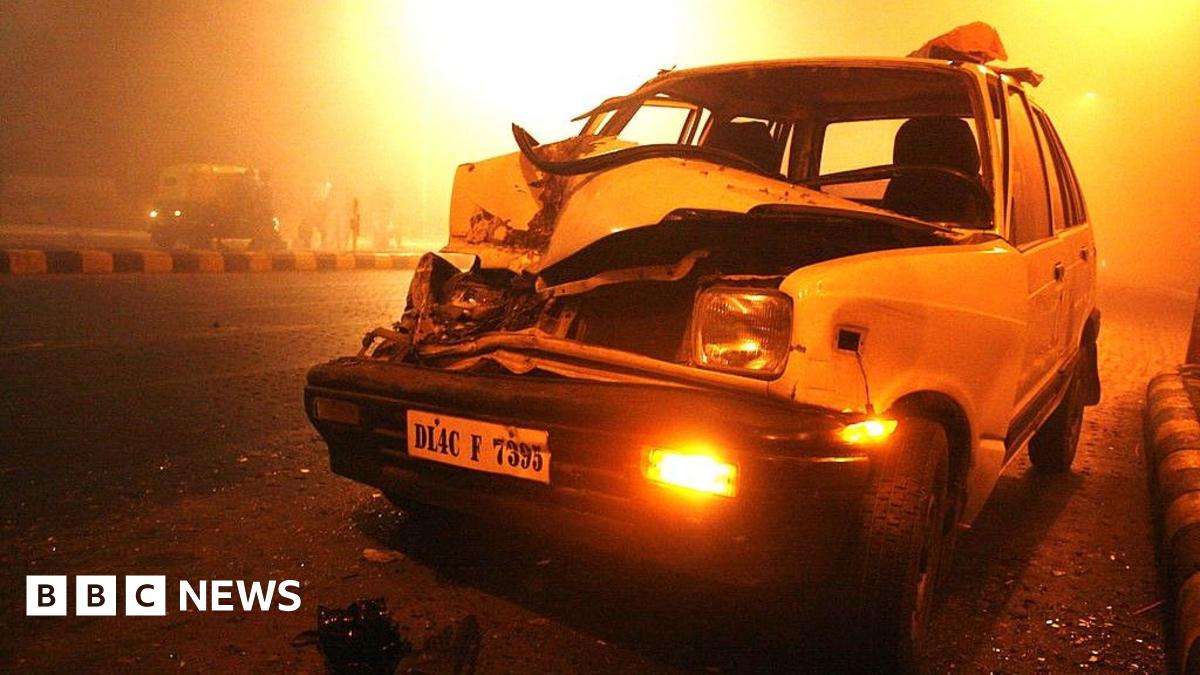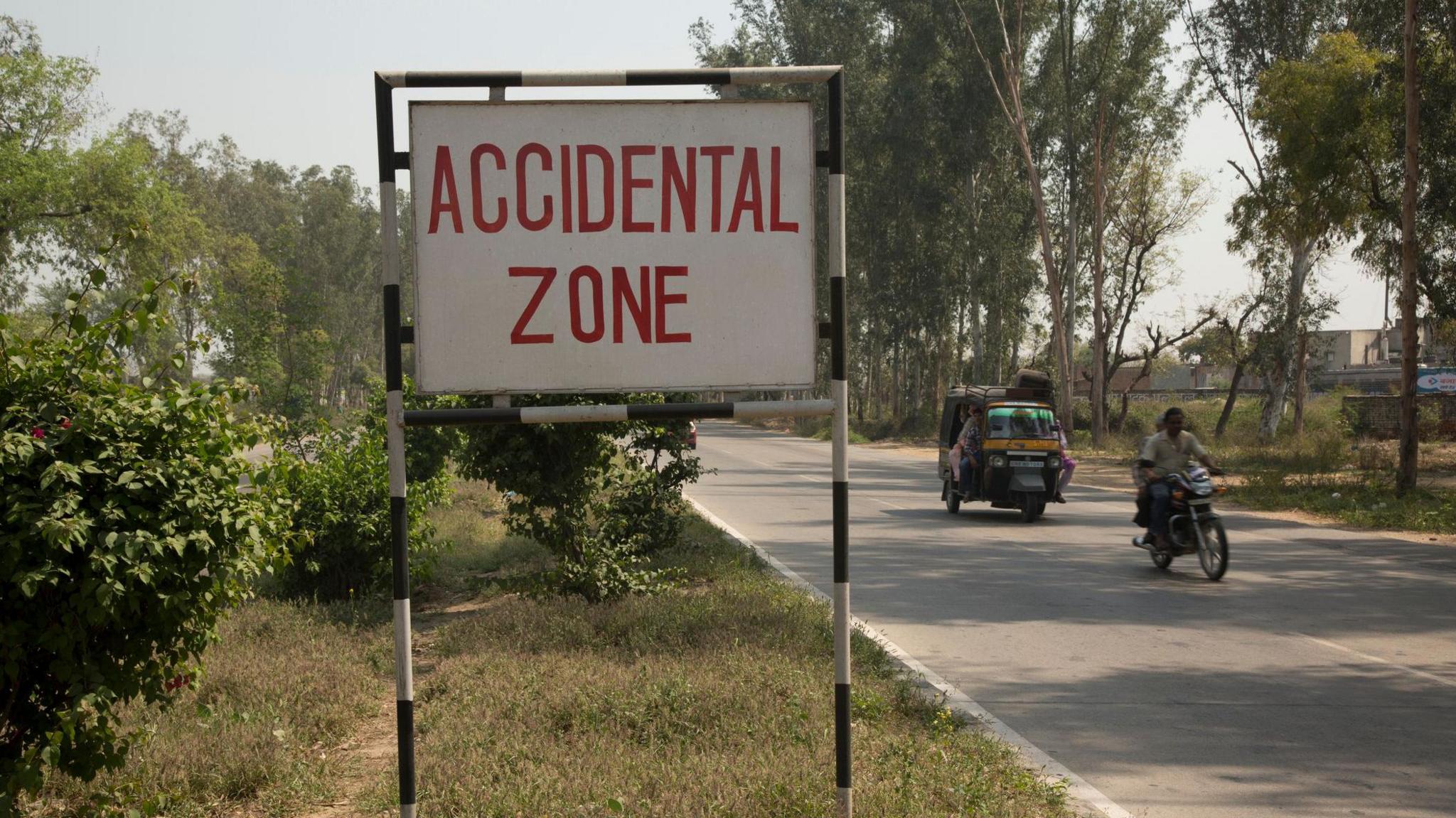## Hold onto your helmets, gamers! India’s roads are about to take you on a wild ride – and it’s not the fun kind.
Forget pixelated polygons and AI-driven crashes, we’re diving into the real-life digital deathmatch happening on the streets of India.
The BBC recently dropped a bombshell report detailing why India’s roads are among the deadliest in the world, and trust us, the stats are more intense than any boss battle. From reckless driving to crumbling infrastructure, we’re breaking down the factors that make navigating these highways a high-stakes gamble.

Systemic Neglect
Weak Enforcement and Inconsistent Regulations
A critical factor contributing to India’s road safety crisis is the pervasive issue of weak enforcement and inconsistent regulations. Traffic laws are often poorly implemented, with lenient penalties for violations and inadequate resources dedicated to law enforcement. This lack of accountability creates an environment where reckless driving and disregard for traffic rules become commonplace, putting lives at risk.
For instance, speeding violations are frequently overlooked, and drunk driving often goes unpunished. This laxity in enforcement encourages dangerous driving behaviors and undermines public trust in the legal system’s ability to ensure road safety.

Corruption’s Role
Furthermore, corruption within the transport sector exacerbates the problem. Bribery and undue influence can compromise safety standards, allowing vehicles to operate without proper inspections or licenses. This undermines the integrity of the regulatory system and perpetuates a culture of impunity on the roads.

A Hazardous Mix: The Unpredictable Landscape of Indian Roads
The Traffic Conundrum
India’s roads are characterized by a chaotic and unpredictable mix of vehicles, pedestrians, and animals. This diverse traffic landscape creates inherent challenges for road safety. Motorized vehicles, ranging from small motorcycles to large trucks, share the roads with non-motorized transport like bicycles, rickshaws, and pedestrians.
The lack of clear traffic rules and enforcement adds to the complexity. Animals, including cows, goats, and stray dogs, often wander onto roads, further increasing the risk of accidents. This chaotic mix necessitates a multi-pronged approach to improving road safety, addressing the needs of all road users.
Space Constraints
Rapid urbanization and population growth have placed immense pressure on India’s road infrastructure. Limited road space, coupled with increasing vehicle ownership, leads to severe traffic congestion. This congestion exacerbates the risk of accidents, as drivers are more likely to make hasty decisions and react impulsively in crowded and stressful conditions.
Furthermore, the lack of adequate pedestrian infrastructure, such as sidewalks and crosswalks, forces pedestrians to navigate busy roads, increasing their vulnerability to collisions with vehicles.
The Informal Economy
The informal economy, particularly street vending and unregulated transportation, adds another layer of complexity to road safety in India. Street vendors often encroach upon roads and sidewalks, narrowing the available space for vehicles and pedestrians. Unlicensed rickshaws and auto-rickshaws, lacking proper safety features and operating outside regulatory frameworks, contribute to the overall chaos and risk on the roads.
Addressing this informal sector requires a balanced approach that considers the economic livelihoods of those involved while prioritizing safety and traffic flow.
A Call to Action: Towards Safer Roads in India
Technological Solutions
Technological advancements offer promising solutions to enhance road safety in India.
- AI-Powered Traffic Management:
- Smart Infrastructure:
- Vehicle Safety Features:
- Stricter Regulations:
- Improved Enforcement:
- Investment in Infrastructure:
Artificial intelligence can be deployed to analyze traffic patterns, predict congestion, and optimize traffic flow, reducing the likelihood of accidents caused by gridlock and congestion.
Implementing smart infrastructure, such as intelligent traffic signals, speed cameras, and road sensors, can deter violations, enforce speed limits, and provide real-time data for traffic management.
Encouraging the adoption of advanced safety features in vehicles, such as lane departure warning systems, automatic emergency braking, and blind spot detection, can significantly reduce the severity of accidents.
Behavioral Change
While technology plays a crucial role, addressing behavioral factors is equally important. Public awareness campaigns can educate drivers and pedestrians about safe road practices, the importance of following traffic rules, and the consequences of reckless driving. Driver education programs can equip drivers with the skills and knowledge necessary to navigate roads safely and responsibly.
Promoting a culture of road safety through community engagement and peer pressure can further encourage responsible behavior on the roads.
Policy Reforms
Strengthening policy and enforcement mechanisms is essential to create a safer road environment. This requires stricter regulations, higher penalties for traffic violations, and increased investment in road safety infrastructure.
Setting stringent standards for vehicle safety, driver licensing, and road design can minimize the risks associated with road travel.
Adequate resources and training for law enforcement agencies are crucial to ensure effective enforcement of traffic laws and deter violations.
Investing in improved road infrastructure, including wider roads, clear markings, pedestrian crossings, and better lighting, can create a safer environment for all road users.
Conclusion
The BBC’s report paints a stark picture of India’s roads: a tragic landscape where vulnerability meets negligence. We’ve seen the overwhelming statistics, the harrowing stories, and the systemic issues that contribute to this deadly reality. From poorly maintained infrastructure and overcrowded roads to lax law enforcement and a culture of risky driving, the article meticulously unveils the complex web of factors weaving this deadly tapestry.
The implications are far-reaching. Beyond the human cost—the countless lives lost and families shattered—India’s road safety crisis hampers economic growth, stifles tourism, and perpetuates a cycle of fear and uncertainty. This isn’t just about fender benders and traffic jams; it’s about the very fabric of Indian society, where the freedom of movement is compromised by the constant threat of danger. The future hinges on a collective commitment to change. It demands a multi-pronged approach, tackling everything from infrastructure upgrades and driver education to stricter enforcement and a cultural shift towards responsible road usage.
India’s journey towards safer roads is a long and arduous one, but it’s a journey that must be taken. Let this report serve as a wake-up call, a reminder that the right to safe passage is a fundamental right, not a privilege. The time for action is now, for every roadblock overcome is a step closer to a future where India’s roads don’t signify danger, but opportunity.